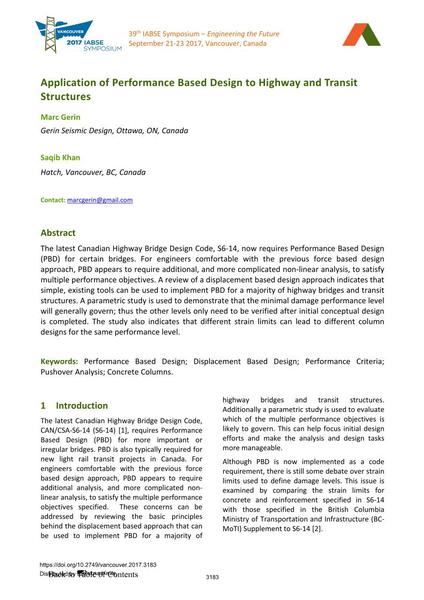Application of Performance Based Design to Highway and Transit Structures

|
|
|||||||||||
Bibliografische Angaben
| Autor(en): |
Marc Gérin
(Gerin Seismic Design, Ottawa, ON, Canada)
Saqib Khan (Hatch, Vancouver, BC, Canada) |
||||
|---|---|---|---|---|---|
| Medium: | Tagungsbeitrag | ||||
| Sprache(n): | Englisch | ||||
| Tagung: | IABSE Symposium: Engineering the Future, Vancouver, Canada, 21-23 September 2017 | ||||
| Veröffentlicht in: | IABSE Symposium Vancouver 2017 | ||||
|
|||||
| Seite(n): | 3183-3190 | ||||
| Anzahl der Seiten (im PDF): | 8 | ||||
| Jahr: | 2017 | ||||
| DOI: | 10.2749/vancouver.2017.3183 | ||||
| Abstrakt: |
The latest Canadian Highway Bridge Design Code, S6-14, now requires Performance Based Design (PBD) for certain bridges. For engineers comfortable with the previous force based design approach, PBD appears to require additional, and more complicated non-linear analysis, to satisfy multiple performance objectives. A review of a displacement based design approach indicates that simple, existing tools can be used to implement PBD for a majority of highway bridges and transit structures. A parametric study is used to demonstrate that the minimal damage performance level will generally govern; thus the other levels only need to be verified after initial conceptual design is completed. The study also indicates that different strain limits can lead to different column designs for the same performance level. |
||||
